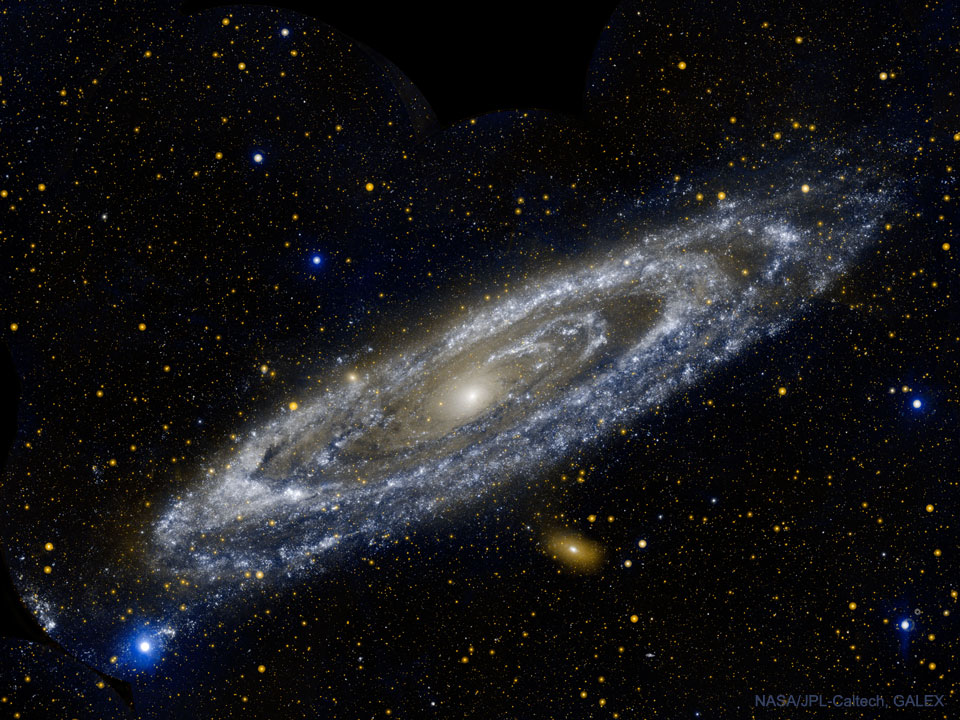2021年7月18日
The Andromeda Galaxy in Ultraviolet
Image Credit: NASA, JPL-Caltech, GALEX
Explanation: What does the Andromeda galaxy look like in ultraviolet light? Young blue stars circling the galactic center dominate. A mere 2.5 million light-years away, the Andromeda Galaxy, also known as M31, really is just next door as large galaxies go. Spanning about 230,000 light-years, it took 11 different image fields from NASA’s Galaxy Evolution Explorer (GALEX) satellite telescope to produce this gorgeous portrait of the spiral galaxy in ultraviolet light in 2003. While its spiral arms stand out in visible light images, Andromeda’s arms look more like rings in ultraviolet. The rings are sites of intense star formation and have been interpreted as evidence that Andromeda collided with its smaller neighboring elliptical galaxy M32 more than 200 million years ago. The Andromeda galaxy and our own comparable Milky Way galaxy are the most massive members of the Local Group of galaxies and are projected to collide in several billion years — perhaps around the time that our Sun’s atmosphere will expand to engulf the Earth.
Tomorrow’s picture: the galaxy above
紫外光波段的仙女座星系
图片来源:NASA、JPL-Caltech、GALEX
说明:紫外光波段的仙女座星系是何种样貌?最鲜明的景观会是星系核的周围,环绕着一圈圈的年轻泛蓝恒星。离我们只有250万光年远、亦称为M31的仙女座星系,以大星系的标准来说近在隔邻。仙女座星系宽达230,000多光年,所以在2003年,NASA的星系演化探测器(GALEX)的望远镜,拍下了11幅不同的照片,才得以建构出此螺旋星系的壮丽紫外光影像。虽然在可见光影像里,仙女座星系的螺旋臂极为鲜明,但是在紫外光波段,螺旋臂却呈环状。这些环是大量恒星诞生之所在,并被诠释为大约2亿多年前,仙女座星系和它的椭圆小伴星系M32曾发生碰撞的证据。仙女座星系和我们大小相近的银河系,是本星系群最大质量的成员;二者预期会在数十亿年后撞在一起,届时我们太阳的大气或许会膨胀到足以吞没地球。
明日的图片: the galaxy above







